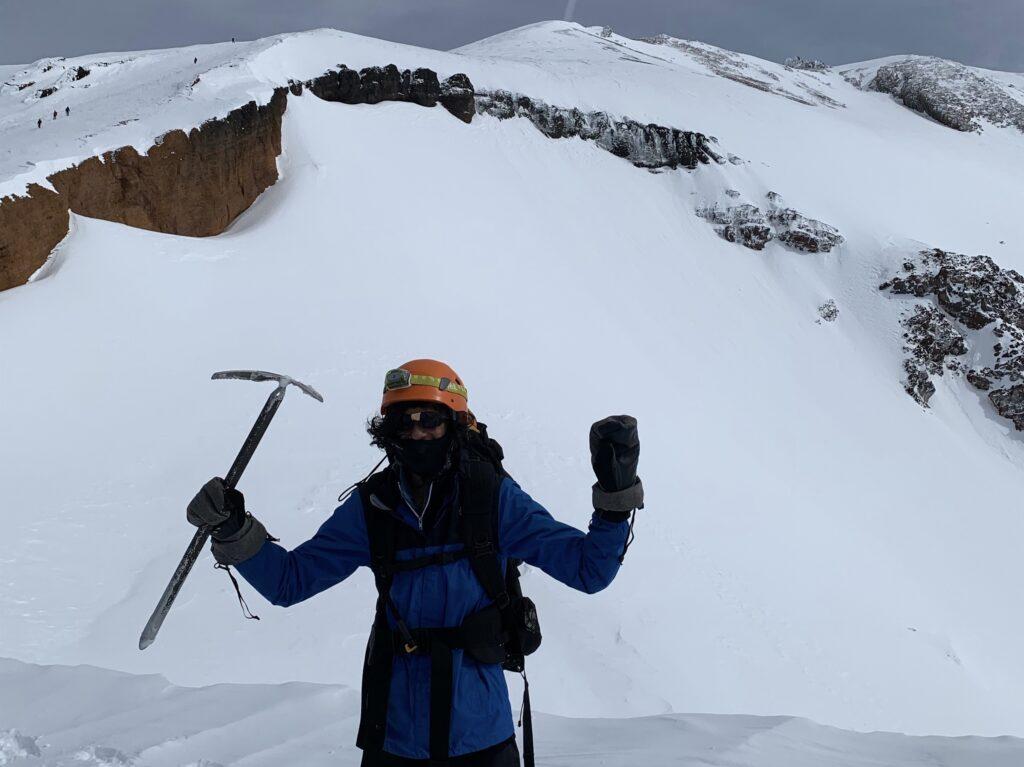Trudging through snow, junior Arjun Bharadhwaj and his dad, Gannesh Bharadhwaj, climbed Mount Shasta in northern California over Memorial Day weekend last summer, overcoming severe winds and below-freezing weather despite running on just four hours of sleep.
They pushed through the “trail of misery,” slowly working their way up to the summit, which is at 14,180 feet.
“While we climb towards the summit, both my dad and I are pretty miserable,” Arjun Bharadhwaj said. “You hate yourself as you do all the tough work, but the views at the top make it worth it.”
Their tradition of climbing Mount Shasta started four years ago after Bharadhwaj’s dad convinced Arjun to come climbing. Both share a love of the outdoors, including doing activities such as camping and skiing, though they had no prior experience with climbing. Despite having some qualms, Arjun rose to the challenge.
“I honestly remember being really excited at the opportunity to climb Shasta for the first time, and I didn’t really think too much about the potential consequences,” Arjun said. “That being said, I was still a little bit wary about doing a climb on this magnitude as I had never done anything like that at that age.”
Three weeks before the last Memorial Day weekend, Bharadhwaj’s dad asked him if he was willing to climb the mountain again — despite the coronavirus and Bharadhwaj’s increased workload as a junior — and the two decided to go for it.
Training for the climb was a feat of its own. Arjun and his dad found local hikes in Saratoga, with one of their favorites being the Bohlman trail. Arjun and his dad would hike up the 6-mile-steep road wearing backpacks, gradually adding weight to mimic the difficulty of a real climb. They also practiced on Black Mountain, a summit located in the Santa Cruz Mountains.
In the past, the pair typically started training one to two months before climbing. This year, however, Arjun and his father started only two weeks in advance, so they intensified their training to at least two difficult hikes per week.
They tackle the mountain in two days.
“The first day has always been a lot sunnier,” Arjun said. “But the second day has been consistently brutal because of the increased elevation. We have to wake up at 1 a.m. and set up their equipment before heading out.”
Wind and the cold have been the number one issue, as the weather becomes more unpredictable the farther they climb.
Arjun and his dad use a variety of climbing gear, such as crampons, spiked metal plates that they attach to their boots to improve mobility and traction. The boots themselves, called doubles, have two layers: a plastic one for warmth and a rubber one for grip.
They also use ice axes for walking sticks and helmets and rope for general safety. To top it all off, Arjun and his dad carry backpacks with dried food and hot water.
Along with their sheer weight, climbing gear is notorious for breaking down in the middle of the climb.
“The gear is not reliable at all, which means that anything can go wrong,” Arjun said. “I remember when I lost half my water because it started leaking during the climb this year.”
Luckily, other climbers on Mount Shasta greatly aided Arjun and his father this year. Arjun recalled when he ran into a doctor on the mountain who supplied them with electrolytes when he and his dad were not coping well with the altitude.
With COVID-19, however, the number of climbers has significantly decreased this year, and Arjun felt like he had the “entire mountain to himself.”
“Even though the numbers of people on the mountain were lower, there weren’t many COVID-19 restrictions,” Arjun said. “We weren’t sure if the mountain was going to be open this year, but masks didn’t even end up being required on the climb.”
Arjun did not let the pandemic prevent him from carrying out his annual tradition with his father, and he plans to continue climbing Mount Shasta in the years to come. He also hopes to do a Mount Everest Base Camp trek and climb Mount Rainier in Washington.
Although bad weather has prevented him from completing the climb on several occasions, Arjun has learned the value of perseverance in his pursuit of the summit.
“It can be frustrating to walk 30 steps and see the landmark just as far away as when I started,” Arjun said. “But the mentality of never giving up, especially on the last run of the climb, has taught me to never quit.”
























